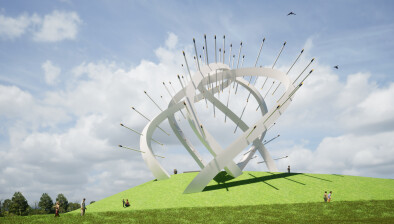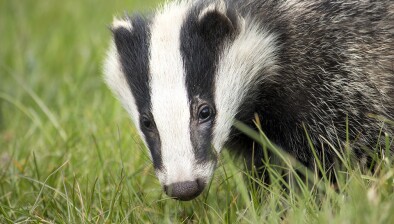And finally… Edinburgh’s buildings inspected by drone
Drones have been deployed to carry out inspections of buildings in Edinburgh in the hope of detecting any dangerous structural defects.
A “hexacopter” equipped with a high-resolution camera is being trialled in the city, which has a large number of multistoreyed, stone-built Victorian and Edwardian buildings.
The city council may now become one of the first local authorities in Scotland to use the technology for the inspection of schools, leisure centres and other public properties. Deploying drones during examinations to decide whether essential work is needed on private homes has not been ruled out.
The unmanned aerial vehicles (UAVs) are likely to be used in the early stages of an inspection to obtain photographic evidence of wear and tear. The company developing the technology said that the devices would offer significant cost advantages over conventional inspection methods since they reduces the need to use expensive cranes, scaffolding and other platforms.
Council leaders said that the pilot scheme had been driven by the need to address budget pressures. A spokesman said: “Trialling new technology solutions is one way we might be able to identify new and creative ways of delivering our services.”
Although smaller than its military-grade counterparts, the £8,000 aircraft tested in Edinburgh is resilient and capable of functioning even if one of its mini-rotors breaks down. The equipment weighs just under 7kg and has a diameter of about 1 metre.
Technicians at Sky View Video were drafted in to carry out the pilot scheme and have praised the council’s willingness to test the equipment.
Craig Jump, the owner-operator of Sky View Video, said: “Edinburgh has many old buildings with complex roofs, which are difficult to access. This technology offers cost-saving advantages over traditional ways of surveying, not to mention the safety advantages. Around 150 people die in the UK every year after falling off ladders or buildings. It is also much quicker to deploy than erecting scaffolding or arranging for cranes or platforms.
“A survey can be undertaken quickly along with council’s own building surveyors, quickly identifying issues, and focusing on areas of concern.
“It can also be used after repairs have been made to ensure that the repair has been completed and to the correct standards.”
However, some surveyors were sceptical about whether the drones should be used in this way. Gordon Murdie, a former chairman of the Royal Institute of Chartered Surveyors East Area, said: “If the council thinks that a radio-controlled, boy-toy helicopter up in the sky is in any way a replacement for a skilled surveyor then it perhaps ought to think again.
“There’s no substitute for the skill of an architectural surveyor using the naked eye, and poking and prodding, to detect defects.”
UAV-mounted cameras are now being considered for use in a number of civilian fields, including monitoring crop growth, landslides and flooding. The BBC has already used a fleet of three “hexacopter” camera drones to record aerial shots of Rio de Janeiro during the World Cup.
Nuclear reprocessing plant operators are considering using them to carry out checks in radioactive environments.
In Amsterdam, drones that flap their wings and are disguised as falcons or hawks have been used to patrol at low levels around Schiphol airport to scare away geese, preventing aircraft from sucking birds into their engines on take-off or landing.
In the United States, paparazzi photographers are using drones to fly over the houses of celebrities.














